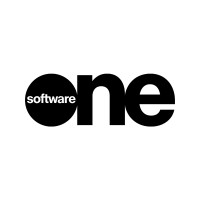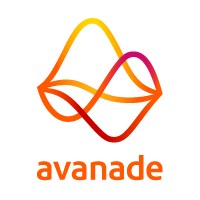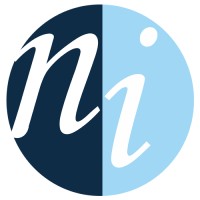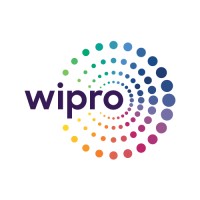
Xplain Company Cyber Security Posture
xplain.chXplain has been active as a supplier of IT solutions in the field of internal security since its foundation in 2000. We work for authorities and organisations with security, migration, law enforcement and correctional tasks. For these authorities and organisations, we offer innovative software products with complete coverage of work processes from initial intake to archiving. The focus of the solutions is on the high automation of "kilowashing" and compliance with legal requirements, in particular also the formal requirements of the Code of Criminal Procedure, as well as the fast and comprehensible exchange of information between all parties involved. Facts & Figures - Founded in 2000 - +80 employees - ISO 9001:2015 certified - Focus on homeland security - 7 locations in 3 countries
Xplain Company Details
xplaingroup
48 employees
444
541
IT Services and IT Consulting
xplain.ch
Scan still pending
XPL_1729313
In-progress
Between 900 and 1000
This score is AI-generated and less favored by cyber insurers, who prefer the TPRM score.
 Xplain Global Score
Xplain Global Score.png)

Xplain Company Scoring based on AI Models
| Model Name | Date | Description | Current Score Difference | Score |
|---|---|---|---|---|
| AVERAGE-Industry | 03-12-2025 | This score represents the average cybersecurity rating of companies already scanned within the same industry. It provides a benchmark to compare an individual company's security posture against its industry peers. | N/A | Between 900 and 1000 |
Xplain Company Cyber Security News & History
| Entity | Type | Severity | Impact | Seen | Url ID | Details | View |
|---|---|---|---|---|---|---|---|
| Xplain | Breach | 60 | 3 | 06/2023 | XPL01012623 | Link | |
Rankiteo Explanation : Attack with significant impact with internal employee data leaksDescription: The cyber attack on the Bernese IT firm Xplain, which offers its services to various federal and cantonal government offices, was investigated by Swiss authorities. On a Darknet forum, threat actors have already posted information they claim to have stolen from the Federal Office of Police (Fedpol) and the Federal Office for Customs and Border Security (FOCBS). According to local media, the company's systems were compromised by intruders who took advantage of a vulnerability. A Fedpol spokesman stated that the agency's projects were not compromised and that Xplain had informed Fedpol of the incident a few days prior. | |||||||
| Xplain | Data Leak | 85 | 4 | 06/2023 | XPL45424923 | Link | |
Rankiteo Explanation : Attack with significant impact with customers data leaksDescription: The cyber attack on the Bernese IT firm Xplain, which offers its services to numerous federal and cantonal government ministries, the army, customs, and the Federal Office of authorities, was investigated by Swiss authorities. On a Darknet forum, threat actors have already posted information they claim to have stolen from the Federal Office of Police (Fedpol) and the Federal Office for Customs and Border Security (FOCBS). While confirming the attack, Fedpol and the federal customs office made an effort to minimize the incident. Threat actors only got access to simulated, anonymous data for testing reasons, claims Fedpol. According to the Federal Office for Customs and Border Security (FOCBS), the disclosed data came from correspondence with its clients. | |||||||
Xplain Company Subsidiaries

Xplain has been active as a supplier of IT solutions in the field of internal security since its foundation in 2000. We work for authorities and organisations with security, migration, law enforcement and correctional tasks. For these authorities and organisations, we offer innovative software products with complete coverage of work processes from initial intake to archiving. The focus of the solutions is on the high automation of "kilowashing" and compliance with legal requirements, in particular also the formal requirements of the Code of Criminal Procedure, as well as the fast and comprehensible exchange of information between all parties involved. Facts & Figures - Founded in 2000 - +80 employees - ISO 9001:2015 certified - Focus on homeland security - 7 locations in 3 countries
Access Data Using Our API

Get company history
.png)
Xplain Cyber Security News
How to communicate clearly (and legally) during a cybersecurity crisis
Trying to duck the consequences of a breach can be dangerous: better to quickly explain what you know and keep affected parties in the loop about next steps.
Elon Musk blames a massive cyberattack for the X outages
A major cyber attack appears to be the root cause of the global outage on X, according to its CEO Elon Musk. About 40,000 users reported issues accessing ...
New sophisticated malware SuperCard X targets Androids via NFC relay attacks
'SuperCard X' - a new MaaS - targets Androids via NFC relay attacks, enabling fraudulent POS and ATM transactions with stolen card data.
What is Cybersecurity and Why is It Important?
Cybersecurity is all about keeping computer systems and electronic data safe. As cybercrime becomes more frequent, cybersecurity ...
Switzerland’s cybersecurity experts still can’t Xplain how federal documents made it to the dark web
Switzerland's cybersecurity experts still can't Xplain how federal documents made it to the dark web · Xplain ransomware attack · Are you a pro?
Xplain Hack Aftermath: Play Ransomware Leaks Sensitive Swiss Government Data
In June 2023, Xplain, a Swiss IT services provider, fell victim to a cyberattack claimed by the Play ransomware group.
What is cybersecurity?
Cybersecurity is the practice of protecting internet-connected systems such as hardware, software and data from cyberthreats.
Topics - An A-Z glossary of cyber security terms and definitions
We have compiled an extensive glossary of all the phrases and terminology associated with cyber attacks and cyber security, from ransomware to malware, ...
Top 5 Cyber Security Challenges
This article will outline the most serious cyber security challenges, best practices to overcome them, the role of advanced security platforms like SentinelOne,

Xplain Similar Companies

SoftwareOne
SoftwareOne is a leading global software and cloud solutions provider that is redefining how companies build, buy and manage everything in the cloud. By helping clients to migrate and modernize their workloads and applications – and in parallel, to navigate and optimize the resulting software and cl

alnamic AG (now Avanade)
Alnamic is pleased to announce that it was acquired by Avanade on April 1st, 2020. Avanade is the leading provider of innovative digital and cloud services, business solutions, and design-led experiences delivered through the power of people and the Microsoft ecosystem. Learn more at www.avanade.co

Nityo Infotech
Nityo Infotech (Nityo) is a Global Technology Solutions and Services organisation. Headquartered in US with deep imprints in LATAM, APAC, EUROPE/CIS & MIDDLE EAST & AFRICA. Nityo is powered by 31,000+ employees across 41 countries serving enterprises across industries like Banking, Insurance,

Wipro
Wipro Limited (NYSE: WIT, BSE: 507685, NSE: WIPRO) is a leading technology services and consulting company focused on building innovative solutions that address clients’ most complex digital transformation needs. Leveraging our holistic portfolio of capabilities in consulting, design, engineering, a

Inetum
Inetum is a European leader in digital services. Inetum’s team of 28,000 consultants and specialists strive every day to make a digital impact for businesses, public sector entities and society. Inetum’s solutions aim at contributing to its clients’ performance and innovation as well as the common g

Velocity Partners
En enero de 2018 nos unimos a Endava Group y somos ahora miembros de una compañía de tecnología con más de 17 años de experiencia trabajando para firmas líderes del sector financiero, seguros, telecomunicaciones, medios, tecnología y retail. A través de la evolución digital, la transformación ágil y

Frequently Asked Questions (FAQ) on Cybersecurity Incidents
Xplain CyberSecurity History Information
Total Incidents: According to Rankiteo, Xplain has faced 2 incidents in the past.
Incident Types: The types of cybersecurity incidents that have occurred include ['Breach', 'Data Leak'].
Total Financial Loss: The total financial loss from these incidents is estimated to be {total_financial_loss}.
Cybersecurity Posture: The company's overall cybersecurity posture is described as Xplain has been active as a supplier of IT solutions in the field of internal security since its foundation in 2000. We work for authorities and organisations with security, migration, law enforcement and correctional tasks. For these authorities and organisations, we offer innovative software products with complete coverage of work processes from initial intake to archiving. The focus of the solutions is on the high automation of "kilowashing" and compliance with legal requirements, in particular also the formal requirements of the Code of Criminal Procedure, as well as the fast and comprehensible exchange of information between all parties involved. Facts & Figures - Founded in 2000 - +80 employees - ISO 9001:2015 certified - Focus on homeland security - 7 locations in 3 countries.
Detection and Response: The company detects and responds to cybersecurity incidents through {description_of_detection_and_response_process}.
Incident Details
Incident 1: Ransomware Attack
Title: {Incident_Title}
Description: {Brief_description_of_the_incident}
Date Detected: {Detection_Date}
Date Publicly Disclosed: {Disclosure_Date}
Date Resolved: {Resolution_Date}
Type: {Type_of_Attack}
Attack Vector: {Attack_Vector}
Vulnerability Exploited: {Vulnerability}
Threat Actor: {Threat_Actor}
Motivation: {Motivation}
Incident 2: Data Breach
Title: {Incident_Title}
Description: {Brief_description_of_the_incident}
Date Detected: {Detection_Date}
Date Publicly Disclosed: {Disclosure_Date}
Date Resolved: {Resolution_Date}
Type: {Type_of_Attack}
Attack Vector: {Attack_Vector}
Vulnerability Exploited: {Vulnerability}
Threat Actor: {Threat_Actor}
Motivation: {Motivation}
Common Attack Types: As of now, the company has not encountered any reported incidents involving common cyberattacks.
Identification of Attack Vectors: The company identifies the attack vectors used in incidents through {description_of_identification_process}.
Impact of the Incidents
Incident 1: Ransomware Attack
Financial Loss: {Financial_Loss}
Data Compromised: {Data_Compromised}
Systems Affected: {Systems_Affected}
Downtime: {Downtime}
Operational Impact: {Operational_Impact}
Conversion Rate Impact: {Conversion_Rate_Impact}
Revenue Loss: {Revenue_Loss}
Customer Complaints: {Customer_Complaints}
Brand Reputation Impact: {Brand_Reputation_Impact}
Legal Liabilities: {Legal_Liabilities}
Identity Theft Risk: {Identity_Theft_Risk}
Payment Information Risk: {Payment_Information_Risk}
Incident 2: Data Breach
Financial Loss: {Financial_Loss}
Data Compromised: {Data_Compromised}
Systems Affected: {Systems_Affected}
Downtime: {Downtime}
Operational Impact: {Operational_Impact}
Conversion Rate Impact: {Conversion_Rate_Impact}
Revenue Loss: {Revenue_Loss}
Customer Complaints: {Customer_Complaints}
Brand Reputation Impact: {Brand_Reputation_Impact}
Legal Liabilities: {Legal_Liabilities}
Identity Theft Risk: {Identity_Theft_Risk}
Payment Information Risk: {Payment_Information_Risk}
Average Financial Loss: The average financial loss per incident is {average_financial_loss}.
Commonly Compromised Data Types: The types of data most commonly compromised in incidents are {list_of_commonly_compromised_data_types}.
Incident 1: Ransomware Attack
Entity Name: {Entity_Name}
Entity Type: {Entity_Type}
Industry: {Industry}
Location: {Location}
Size: {Size}
Customers Affected: {Customers_Affected}
Incident 2: Data Breach
Entity Name: {Entity_Name}
Entity Type: {Entity_Type}
Industry: {Industry}
Location: {Location}
Size: {Size}
Customers Affected: {Customers_Affected}
Response to the Incidents
Incident 1: Ransomware Attack
Incident Response Plan Activated: {Yes/No}
Third Party Assistance: {Yes/No}
Law Enforcement Notified: {Yes/No}
Containment Measures: {Containment_Measures}
Remediation Measures: {Remediation_Measures}
Recovery Measures: {Recovery_Measures}
Communication Strategy: {Communication_Strategy}
Adaptive Behavioral WAF: {Adaptive_Behavioral_WAF}
On-Demand Scrubbing Services: {On_Demand_Scrubbing_Services}
Network Segmentation: {Network_Segmentation}
Enhanced Monitoring: {Enhanced_Monitoring}
Incident 2: Data Breach
Incident Response Plan Activated: {Yes/No}
Third Party Assistance: {Yes/No}
Law Enforcement Notified: {Yes/No}
Containment Measures: {Containment_Measures}
Remediation Measures: {Remediation_Measures}
Recovery Measures: {Recovery_Measures}
Communication Strategy: {Communication_Strategy}
Adaptive Behavioral WAF: {Adaptive_Behavioral_WAF}
On-Demand Scrubbing Services: {On_Demand_Scrubbing_Services}
Network Segmentation: {Network_Segmentation}
Enhanced Monitoring: {Enhanced_Monitoring}
Incident Response Plan: The company's incident response plan is described as {description_of_incident_response_plan}.
Third-Party Assistance: The company involves third-party assistance in incident response through {description_of_third_party_involvement}.
Data Breach Information
Incident 2: Data Breach
Type of Data Compromised: {Type_of_Data}
Number of Records Exposed: {Number_of_Records}
Sensitivity of Data: {Sensitivity_of_Data}
Data Exfiltration: {Yes/No}
Data Encryption: {Yes/No}
File Types Exposed: {File_Types}
Personally Identifiable Information: {Yes/No}
Prevention of Data Exfiltration: The company takes the following measures to prevent data exfiltration: {description_of_prevention_measures}.
Handling of PII Incidents: The company handles incidents involving personally identifiable information (PII) through {description_of_handling_process}.
Ransomware Information
Incident 1: Ransomware Attack
Ransom Demanded: {Ransom_Amount}
Ransom Paid: {Ransom_Paid}
Ransomware Strain: {Ransomware_Strain}
Data Encryption: {Yes/No}
Data Exfiltration: {Yes/No}
Ransom Payment Policy: The company's policy on paying ransoms in ransomware incidents is described as {description_of_ransom_payment_policy}.
Data Recovery from Ransomware: The company recovers data encrypted by ransomware through {description_of_data_recovery_process}.
Regulatory Compliance
Incident 1: Ransomware Attack
Regulations Violated: {Regulations_Violated}
Fines Imposed: {Fines_Imposed}
Legal Actions: {Legal_Actions}
Regulatory Notifications: {Regulatory_Notifications}
Incident 2: Data Breach
Regulations Violated: {Regulations_Violated}
Fines Imposed: {Fines_Imposed}
Legal Actions: {Legal_Actions}
Regulatory Notifications: {Regulatory_Notifications}
Regulatory Frameworks: The company complies with the following regulatory frameworks regarding cybersecurity: {list_of_regulatory_frameworks}.
Ensuring Regulatory Compliance: The company ensures compliance with regulatory requirements through {description_of_compliance_measures}.
Lessons Learned and Recommendations
Incident 1: Ransomware Attack
Lessons Learned: {Lessons_Learned}
Incident 2: Data Breach
Lessons Learned: {Lessons_Learned}
Incident 1: Ransomware Attack
Recommendations: {Recommendations}
Incident 2: Data Breach
Recommendations: {Recommendations}
Key Lessons Learned: The key lessons learned from past incidents are {list_of_key_lessons_learned}.
Implemented Recommendations: The company has implemented the following recommendations to improve cybersecurity: {list_of_implemented_recommendations}.
References
Additional Resources: Stakeholders can find additional resources on cybersecurity best practices at {list_of_additional_resources}.
Investigation Status
Incident 1: Ransomware Attack
Investigation Status: {Investigation_Status}
Incident 2: Data Breach
Investigation Status: {Investigation_Status}
Communication of Investigation Status: The company communicates the status of incident investigations to stakeholders through {description_of_communication_process}.
Stakeholder and Customer Advisories
Incident 1: Ransomware Attack
Stakeholder Advisories: {Stakeholder_Advisories}
Customer Advisories: {Customer_Advisories}
Incident 2: Data Breach
Stakeholder Advisories: {Stakeholder_Advisories}
Customer Advisories: {Customer_Advisories}
Advisories Provided: The company provides the following advisories to stakeholders and customers following an incident: {description_of_advisories_provided}.
Initial Access Broker
Incident 1: Ransomware Attack
Entry Point: {Entry_Point}
Reconnaissance Period: {Reconnaissance_Period}
Backdoors Established: {Backdoors_Established}
High Value Targets: {High_Value_Targets}
Data Sold on Dark Web: {Yes/No}
Incident 2: Data Breach
Entry Point: {Entry_Point}
Reconnaissance Period: {Reconnaissance_Period}
Backdoors Established: {Backdoors_Established}
High Value Targets: {High_Value_Targets}
Data Sold on Dark Web: {Yes/No}
Monitoring and Mitigation of Initial Access Brokers: The company monitors and mitigates the activities of initial access brokers through {description_of_monitoring_and_mitigation_measures}.
Post-Incident Analysis
Incident 1: Ransomware Attack
Root Causes: {Root_Causes}
Corrective Actions: {Corrective_Actions}
Incident 2: Data Breach
Root Causes: {Root_Causes}
Corrective Actions: {Corrective_Actions}
Post-Incident Analysis Process: The company's process for conducting post-incident analysis is described as {description_of_post_incident_analysis_process}.
Corrective Actions Taken: The company has taken the following corrective actions based on post-incident analysis: {list_of_corrective_actions_taken}.
Additional Questions
General Information
Ransom Payment History: The company has {paid/not_paid} ransoms in the past.
Last Ransom Demanded: The amount of the last ransom demanded was {last_ransom_amount}.
Last Attacking Group: The attacking group in the last incident was {last_attacking_group}.
Incident Details
Most Recent Incident Detected: The most recent incident detected was on {most_recent_incident_detected_date}.
Most Recent Incident Publicly Disclosed: The most recent incident publicly disclosed was on {most_recent_incident_publicly_disclosed_date}.
Most Recent Incident Resolved: The most recent incident resolved was on {most_recent_incident_resolved_date}.
Impact of the Incidents
Highest Financial Loss: The highest financial loss from an incident was {highest_financial_loss}.
Most Significant Data Compromised: The most significant data compromised in an incident was {most_significant_data_compromised}.
Most Significant System Affected: The most significant system affected in an incident was {most_significant_system_affected}.
Response to the Incidents
Third-Party Assistance in Most Recent Incident: The third-party assistance involved in the most recent incident was {third_party_assistance_in_most_recent_incident}.
Containment Measures in Most Recent Incident: The containment measures taken in the most recent incident were {containment_measures_in_most_recent_incident}.
Data Breach Information
Most Sensitive Data Compromised: The most sensitive data compromised in a breach was {most_sensitive_data_compromised}.
Number of Records Exposed: The number of records exposed in the most significant breach was {number_of_records_exposed}.
Ransomware Information
Highest Ransom Demanded: The highest ransom demanded in a ransomware incident was {highest_ransom_demanded}.
Highest Ransom Paid: The highest ransom paid in a ransomware incident was {highest_ransom_paid}.
Regulatory Compliance
Highest Fine Imposed: The highest fine imposed for a regulatory violation was {highest_fine_imposed}.
Most Significant Legal Action: The most significant legal action taken for a regulatory violation was {most_significant_legal_action}.
Lessons Learned and Recommendations
Most Significant Lesson Learned: The most significant lesson learned from past incidents was {most_significant_lesson_learned}.
Most Significant Recommendation Implemented: The most significant recommendation implemented to improve cybersecurity was {most_significant_recommendation_implemented}.
References
Most Recent Source: The most recent source of information about an incident is {most_recent_source}.
Most Recent URL for Additional Resources: The most recent URL for additional resources on cybersecurity best practices is {most_recent_url}.
Investigation Status
Current Status of Most Recent Investigation: The current status of the most recent investigation is {current_status_of_most_recent_investigation}.
Stakeholder and Customer Advisories
Most Recent Stakeholder Advisory: The most recent stakeholder advisory issued was {most_recent_stakeholder_advisory}.
Most Recent Customer Advisory: The most recent customer advisory issued was {most_recent_customer_advisory}.
Initial Access Broker
Most Recent Entry Point: The most recent entry point used by an initial access broker was {most_recent_entry_point}.
Most Recent Reconnaissance Period: The most recent reconnaissance period for an incident was {most_recent_reconnaissance_period}.
Post-Incident Analysis
Most Significant Root Cause: The most significant root cause identified in post-incident analysis was {most_significant_root_cause}.
Most Significant Corrective Action: The most significant corrective action taken based on post-incident analysis was {most_significant_corrective_action}.
What Do We Measure?
















Every week, Rankiteo analyzes billions of signals to give organizations a sharper, faster view of emerging risks. With deeper, more actionable intelligence at their fingertips, security teams can outpace threat actors, respond instantly to Zero-Day attacks, and dramatically shrink their risk exposure window.
These are some of the factors we use to calculate the overall score:
Identify exposed access points, detect misconfigured SSL certificates, and uncover vulnerabilities across the network infrastructure.
Gain visibility into the software components used within an organization to detect vulnerabilities, manage risk, and ensure supply chain security.
Monitor and manage all IT assets and their configurations to ensure accurate, real-time visibility across the company's technology environment.
Leverage real-time insights on active threats, malware campaigns, and emerging vulnerabilities to proactively defend against evolving cyberattacks.




